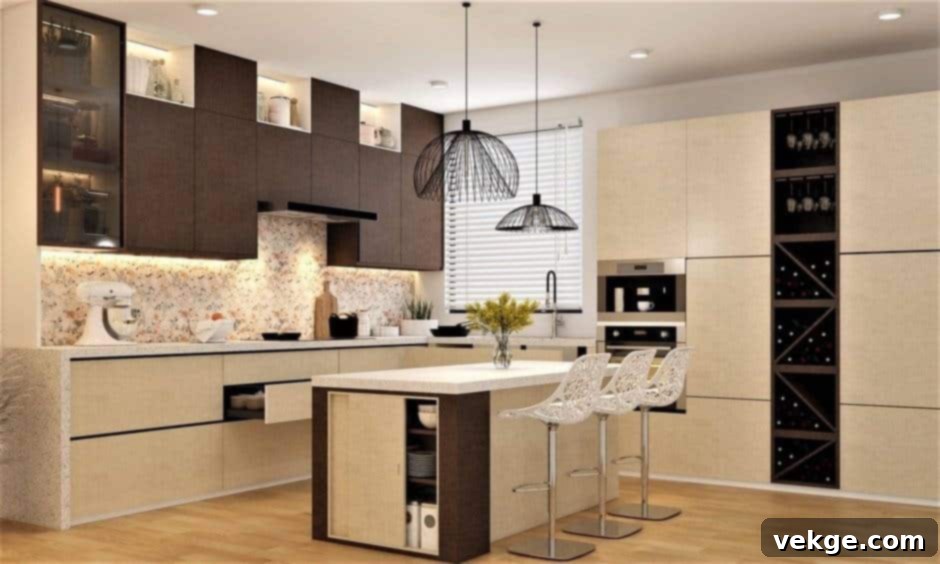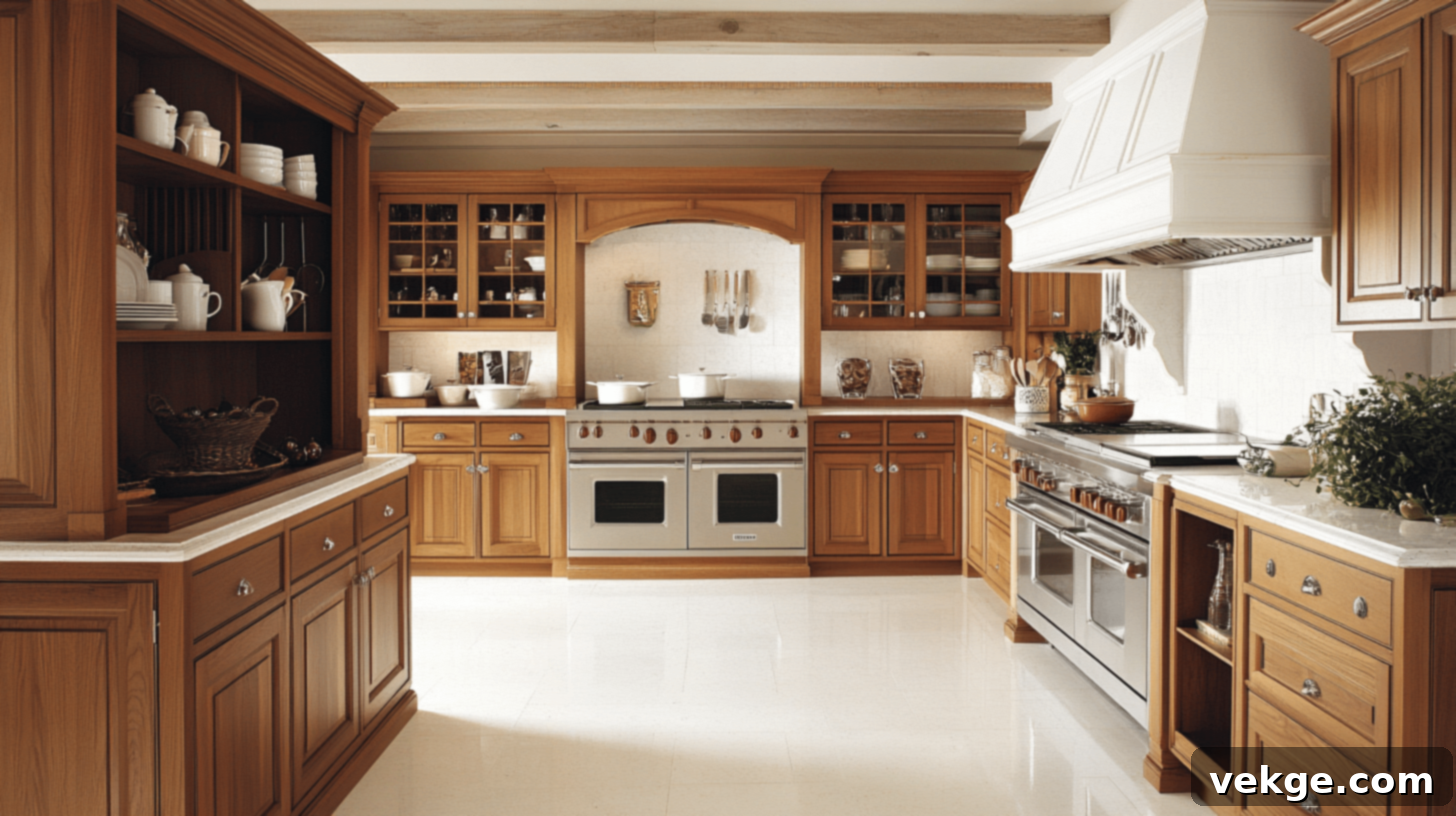Transform Your Home: The Ultimate Guide to Custom Maui Kitchen Cabinetry
When embarking on a kitchen renovation, the decision to invest in custom Maui kitchen cabinetry stands out as one of the most impactful choices you can make. Far beyond the generic limitations of stock cabinets, custom options offer unparalleled personalization, allowing your kitchen to perfectly align with your unique style, specific needs, and the distinct layout of your home. It’s an opportunity to create a space that is not only highly functional but also a true reflection of your personality and the vibrant spirit of Maui living. If you’re considering a custom cabinetry project for your home, this comprehensive guide will walk you through essential tips and considerations to ensure a smooth, successful, and inspiring transformation.
1. Define Your Needs and Lifestyle for Bespoke Cabinetry
Before any design work begins, the most crucial first step is a thorough assessment of your kitchen needs and how you truly live within your space. Your kitchen isn’t just a place to cook; it’s often the heart of your home, a gathering spot for family and friends, and a canvas for your culinary adventures. Understanding your daily routines, cooking habits, and entertaining style will profoundly inform every cabinetry choice, from the overall layout to the minutiae of internal storage solutions.
Assess Your Kitchen Lifestyle
- The Avid Home Chef: Do you frequently prepare elaborate meals, experiment with new recipes, and require ample counter space for prep? You might need specialized storage for large appliances, an expansive pantry, and easily accessible spice racks.
- The Entertainer: If your kitchen is often buzzing with guests, consider cabinetry that facilitates smooth flow, perhaps with a beverage station, dedicated barware storage, or an island designed for mingling.
- The Family Hub: For busy households, durability, easy-to-clean surfaces, and child-friendly features might be paramount. Think about designated zones for homework, quick snacks, or even built-in pet feeding stations.
- The Minimalist: If you prefer clean lines and uncluttered surfaces, hidden storage, integrated appliances, and a sleek, streamlined design will be key.
Optimize Your Storage Needs
Pantry Space: A well-designed pantry is a game-changer. Consider options like tall pull-out pantries that bring items to you, dedicated walk-in pantries with custom shelving, or deep cabinets with roll-out trays that maximize vertical space, ensuring every inch of your Maui kitchen cabinetry is utilized efficiently.
Specialized Storage: Go beyond basic shelves. Envision custom features such as built-in spice racks, pull-out waste and recycling bins, pot and pan organizers, tray dividers for baking sheets, wine racks, or even hidden charging stations for electronics. These tailored solutions cater precisely to your culinary habits and daily routines, keeping your kitchen organized and functional.
Appliance Garages: Keep counters clear by integrating appliance garages where blenders, toasters, and coffee makers can be stored and easily accessed when needed, then hidden away when not in use.
2. Set a Realistic and Detailed Budget for Your Custom Project

Custom cabinetry represents a significant investment, and costs can vary dramatically based on myriad factors. Establishing a clear and realistic budget early in the process is not just crucial; it’s empowering. It helps you make informed decisions, prioritize features, and avoid unforeseen expenses. Be honest about your financial comfort zone and allocate funds wisely across all aspects of the project.
Comprehensive Cost Breakdown
- Materials: The choice of material is a primary cost driver. Solid hardwoods like maple, cherry, or oak offer premium durability and beauty but come at a higher price point. Plywood is a sturdy and popular alternative to particleboard, less prone to warping, and available in various grades. MDF (Medium-Density Fiberboard) is a cost-effective option, ideal for painted finishes, though generally less durable than solid wood or high-grade plywood. Exotic woods or specialty veneers will naturally incur higher costs.
- Labor and Installation: Professional design, fabrication, and installation are non-negotiable for custom cabinets. These labor costs ensure precision, proper alignment, and longevity. Do not underestimate the value of skilled craftsmanship; it directly impacts the final look and functionality of your Maui kitchen cabinetry.
- Finishes: The type of finish (paint, stain, glaze, lacquer, distressed look) and the number of coats can influence the price. High-quality, multi-step finishes offer enhanced durability and aesthetic appeal.
- Hardware: Knobs, pulls, hinges, and drawer slides might seem like minor details, but premium hardware can add up. Opting for soft-close hinges, full-extension drawer slides, and designer pulls contributes to both cost and user experience.
- Additional Features and Accessories: Don’t forget to account for internal accessories like pull-out shelves, lazy Susans, lighting (under-cabinet, in-cabinet), glass inserts, decorative molding, and other custom elements you envision.
When budgeting, it’s wise to set aside a contingency fund (typically 10-15% of the total project cost) for any unexpected issues or desired upgrades that may arise during the renovation.
3. Choose the Right Materials and Finishes for Longevity and Style

The materials and finishes you select for your custom cabinetry will define both the aesthetic appeal and the long-term durability of your kitchen. Given the unique climate of Maui, with its humidity and salt air, choosing resilient and appropriate materials is especially important to ensure your investment stands the test of time.
Popular Cabinet Material Options
- Solid Wood: A timeless choice, offering unparalleled beauty, warmth, and durability. Common species include oak, maple, cherry, and alder. Each wood possesses unique grain patterns and can be stained or painted to match any design aesthetic, from rustic to contemporary. Solid wood is excellent for crafting intricate details and can be refinished over time.
- Plywood: A superior alternative to particleboard for cabinet boxes, plywood is constructed from multiple thin layers of wood veneer glued together. It offers excellent strength, resistance to warping, and holds screws well. Various grades are available, with cabinet-grade plywood being a popular and durable choice for custom Maui kitchen cabinetry.
- MDF (Medium-Density Fiberboard): An engineered wood product made from wood fibers pressed with resin. MDF is very stable, smooth, and an excellent substrate for painted finishes, providing a seamless look. It’s more cost-effective than solid wood or plywood, though it is less resistant to moisture and impacts.
- Laminates and Thermofoil: These are synthetic materials applied over a base of MDF or particleboard. They offer a wide range of colors and patterns, including convincing wood grain imitations, at a lower cost. They are generally easy to clean but can be susceptible to chipping or peeling over time, especially with prolonged exposure to heat or moisture.
- Specialty Materials: For unique aesthetics, consider options like bamboo (sustainable, durable), stainless steel (modern, hygienic), or reclaimed wood (eco-friendly, unique character).
The Impact of Finish Matters
The finish dramatically influences the overall style and character of your kitchen. It also provides a protective layer against daily wear and tear:
- Paints: Offer an endless palette of colors, allowing for bold statements or subtle sophistication. Matte finishes lend a more rustic or contemporary feel, while glossy finishes create a modern, reflective look.
- Stains: Enhance the natural beauty and grain of wood, ranging from light washes to deep, rich tones. Stains protect the wood while allowing its inherent character to shine through.
- Glazes: Applied over a stained or painted finish, glazes add depth and an aged or antiqued appearance, settling into crevices and corners.
- Distressed Finishes: Create a vintage or farmhouse look by mimicking natural wear and tear, complete with subtle abrasions, wormholes, or rub-throughs.
- Lacquers and Varnishes: Provide a durable, protective layer with varying sheen levels, from matte to high-gloss, enhancing the longevity of your cabinetry.
When selecting materials and finishes for your Maui kitchen cabinetry, always consider how they will perform in your home’s environment, especially regarding moisture and sunlight exposure.
4. Design for Optimal Functionality and Ergonomic Flow
Custom cabinetry should always prioritize functionality without sacrificing style. A well-designed kitchen not only looks beautiful but also makes cooking, cleaning, and entertaining a joyous experience. Thoughtful planning of the layout and internal components is key to achieving this balance.
Adhere to the Work Triangle Principle
The classic kitchen work triangle—stove, sink, and refrigerator—remains a fundamental concept for efficient kitchen design. Ensure these three primary elements are in comfortable proximity to each other, forming a triangle that minimizes steps and maximizes efficiency while cooking. This principle applies to various kitchen layouts, including U-shape, L-shape, galley, and those with central islands.
Establish Functional Zones
Beyond the work triangle, consider creating distinct zones within your kitchen to enhance organization and workflow:
- Prep Zone: Near the sink and refrigerator, with ample counter space for chopping and mixing.
- Cooking Zone: Centered around the stove or cooktop, with easy access to pots, pans, and spices.
- Cleaning Zone: Focused on the sink and dishwasher, with storage for cleaning supplies and dishware.
- Pantry/Storage Zone: For food, small appliances, and lesser-used items.
- Beverage/Snack Zone: For coffee makers, wine coolers, or a quick grab-and-go area.
Maximize Vertical Space
If you have a smaller kitchen or simply desire more storage, extend your cabinetry to the ceiling. This not only provides additional storage for seasonal items or less-frequently used appliances but also creates a more expansive and finished aesthetic, drawing the eye upward. Incorporate decorative crown molding for a polished look.
Thoughtful Island Design
A kitchen island can be a versatile powerhouse. Design it to include seating for casual dining, integrated storage on one or both sides, a prep sink, a dedicated microwave drawer, or even a secondary cooking surface. Consider its size and placement to ensure comfortable circulation around it.
Incorporate Open Shelving or Glass-Front Cabinets
While custom cabinetry is about maximizing enclosed storage, open shelves or glass-front cabinets can add visual interest, break up large expanses of cabinetry, and provide opportunities for display. They are perfect for showcasing beautiful dishware, cookbooks, decorative items, or locally sourced Maui pottery, adding a personal touch to your kitchen.
For custom Maui kitchen cabinetry, integrating features like wide drawers for pots and pans, pull-out cutting boards, and corner solutions like Magic Corners or LeMans units can further enhance daily functionality.
5. Integrate Thoughtful Lighting to Enhance Ambiance and Utility

Lighting is a fundamental, yet often underestimated, element of custom kitchen design. It extends beyond mere illumination; it shapes the ambiance, highlights architectural features, and significantly enhances the functionality of your space. A well-planned lighting scheme for your Maui kitchen cabinetry transforms it from merely practical to truly inviting and efficient.
Implement Layered Lighting
The most effective kitchen lighting schemes employ a combination of three layers:
- Ambient Lighting: Provides overall illumination for the entire room. Recessed lighting, flush-mount fixtures, or natural light from windows are common sources.
- Task Lighting: Essential for work surfaces. Under-cabinet lighting (LED strips or puck lights) brightens countertops, making food preparation safer and more enjoyable. Pendant lights over an island or peninsula also serve as excellent task lighting while adding a stylish focal point.
- Accent Lighting: Used to highlight specific features or create mood. In-cabinet lighting for glass-front cabinets, toe-kick lighting along the base of cabinets, or small spot lights on decorative shelves can add depth and visual interest, turning your custom cabinetry into a display piece.
Consider dimmers for all lighting layers to allow flexibility in setting the mood, from bright and functional for cooking to soft and inviting for entertaining. Smart lighting systems can also offer unparalleled convenience and customization.
6. Personalize Your Design to Reflect Your Unique Style
This is where your custom cabinetry truly becomes yours. Customization is the essence of bespoke design, allowing you to infuse your personality and preferences into every detail. Don’t shy away from incorporating unique elements that transform your kitchen into a one-of-a-kind space.
Make a Statement with Color and Finish
- Color Choices: While classic whites and neutrals are enduring, don’t be afraid to explore bold colors for your cabinetry. A vibrant island, a contrasting lower cabinet color, or a pop of color in a hutch can add immense character and a distinctive touch to your kitchen.
- Finish Combinations: Mix and match finishes, such as painted perimeter cabinets with a stained wood island, to add depth and visual interest.
Select Distinctive Hardware
The right knobs, pulls, and handles are like jewelry for your cabinets. They can dramatically alter the perception of your kitchen’s style. Choose materials (brushed nickel, matte black, brass, bronze, glass) and styles (traditional knobs, sleek bar pulls, rustic cup pulls) that complement your overall design aesthetic and feel comfortable in your hand. Consider integrated pulls for a seamless, handle-less look for ultra-modern Maui kitchen cabinetry.
Incorporate Custom Features that Define Your Space
- Integrated Appliances: Seamlessly blend refrigerators, dishwashers, and even range hoods behind custom panels for a clean, cohesive look.
- Farmhouse Sinks: A classic choice that adds charm and character, particularly in traditional or rustic kitchen designs.
- Decorative Molding and Millwork: Crown molding, decorative legs, corbels, and fluting can elevate the elegance and craftsmanship of your cabinetry.
- Built-in Seating: A banquette or window seat integrated into your cabinetry design offers a cozy dining nook and additional storage.
- Display Cabinets: Use glass-front doors or open shelving to showcase cherished dishware, artwork, or your collection of local Maui mementos.
- Specialty Appliances: A built-in wine cooler, an espresso machine nook, or a dedicated baking center with a marble slab.
7. Collaborate with a Trusted Professional
Navigating the complexities of custom cabinetry design and installation is a specialized field. Enlisting the help of experienced professionals is not just beneficial; it’s often essential for achieving the best results and avoiding costly mistakes.
The Value of Expert Guidance
A professional kitchen designer or a skilled custom cabinet maker brings a wealth of knowledge, experience, and an eye for detail to your project. They can:
- Offer Insights: Provide expert advice on materials, finishes, and design trends, helping you make informed decisions.
- Optimize Layout: Create functional layouts that maximize space, improve workflow, and adhere to ergonomic principles.
- Source Quality Materials: Connect you with suppliers for high-quality, durable materials suitable for the Maui climate.
- Manage the Project: Oversee the fabrication and installation process, ensuring precision and adherence to timelines.
- Avoid Pitfalls: Anticipate and mitigate potential challenges, saving you time and money.
Collaboration is Key
Successful custom cabinetry projects are built on strong communication and collaboration. Be open to suggestions and feedback from your designer or cabinet maker. Share your vision clearly, but also be receptive to their expertise. They can offer innovative alternatives and design solutions that enhance both the functionality and aesthetics of your Maui kitchen cabinetry, helping you achieve a cohesive and stunning result.
When selecting a professional, always check their portfolio, ask for references, and ensure they have a deep understanding of local building codes and design preferences in Maui.
8. Plan for the Future: Durability, Adaptability, and Resale Value
As you meticulously design your custom cabinetry, thinking long-term is paramount. Your kitchen is not just for today; it’s an investment in your home’s future. Consider how your needs might evolve over time and how your cabinetry can adapt.
Invest in Enduring Quality
While it can be tempting to cut costs, investing in high-quality materials, superior craftsmanship, and reputable professionals will undoubtedly pay off. High-quality custom cabinets are more durable, less prone to wear and tear, and will maintain their beauty and functionality for decades, providing lasting satisfaction and reducing the need for premature replacements. This is especially true for Maui kitchen cabinetry, where humidity and the coastal environment demand robust construction.
Embrace Flexibility and Adaptability
Design with flexibility in mind. Features like adjustable shelving, modular storage components, and easily reconfigurable interiors allow your cabinets to adapt to changing storage needs, new appliances, or evolving lifestyles. This foresight ensures your kitchen remains highly functional for years to come, even if your family grows or your cooking habits shift.
Consider Resale Value
A beautifully designed, high-quality custom kitchen significantly enhances the overall value and appeal of your home. It’s often a major selling point for potential buyers, offering an excellent return on investment. A timeless design, rather than one solely based on fleeting trends, will maintain its desirability.
Regular maintenance and proper care, as advised by your cabinet maker, will also extend the life and beauty of your custom cabinetry, preserving your investment.
Final Thoughts on Your Custom Maui Kitchen Cabinetry Journey
Custom kitchen cabinetry is more than just an upgrade; it’s a transformative investment that can profoundly elevate your culinary space, making it both exceptionally functional and visually breathtaking. By diligently defining your needs, establishing a clear budget, and thoughtfully selecting the finest materials and finishes, you lay the groundwork for a kitchen that not only fulfills your current desires but also stands as a testament to quality and enduring style. Embrace the incredible opportunity to personalize every detail, crafting a space that seamlessly integrates with your lifestyle and reflects the unique charm of Maui. Enjoy every step of the journey as you transform your kitchen into a true reflection of your dreams and a cherished heart of your home. Happy renovating!
